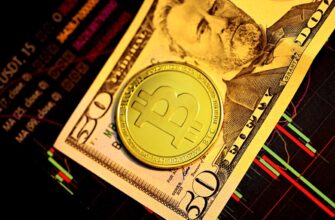- Rupiah to USD History: Understanding Indonesia’s Currency Journey
- Early History of the Rupiah (1949–1965)
- The New Order Era and Stabilization (1966–1997)
- The Asian Financial Crisis (1997–1998)
- Post-Crisis Recovery (1999–2008)
- Modern Era (2010–Present)
- Key Factors Influencing Rupiah to USD Rates
- FAQ: Rupiah to USD History
Rupiah to USD History: Understanding Indonesia’s Currency Journey
The Indonesian Rupiah (IDR) to US Dollar (USD) exchange rate has experienced significant fluctuations over the decades, reflecting Indonesia’s economic challenges, political shifts, and global market dynamics. This article explores the history of the Rupiah to USD exchange rate, key events that shaped its value, and what the future may hold for this critical financial metric.
Early History of the Rupiah (1949–1965)
Indonesia introduced the Rupiah in 1949 after gaining independence from Dutch colonial rule. Initially, the currency was pegged to the Dutch Guilder, but economic instability soon led to changes:
- 1949–1952: 1 USD = 3.8 IDR (fixed peg).
- 1950s: Hyperinflation and political turmoil caused rapid devaluation.
- 1965: The Rupiah plummeted to 1 USD = 5,000 IDR amid Sukarno’s economic mismanagement.
The New Order Era and Stabilization (1966–1997)
Under President Suharto, Indonesia implemented economic reforms to stabilize the Rupiah:
- 1966–1971: Currency revaluation (1 new IDR = 1,000 old IDR).
- 1978: Shift to a managed float system, leading to a 50% devaluation.
- 1980s–1990s: Oil exports and foreign investment strengthened the Rupiah (1 USD ≈ 2,000–2,500 IDR).
The Asian Financial Crisis (1997–1998)
The Rupiah collapsed during the regional economic meltdown:
- July 1997: 1 USD = 2,600 IDR.
- January 1998: 1 USD = 17,000 IDR (all-time low).
- Aftermath: IMF bailout and Suharto’s resignation marked a turning point.
Post-Crisis Recovery (1999–2008)
Indonesia rebuilt its economy, and the Rupiah gradually recovered:
- 2004: 1 USD ≈ 8,900 IDR.
- 2008: Global financial crisis caused temporary volatility (1 USD ≈ 12,000 IDR).
Modern Era (2010–Present)
Recent trends reflect Indonesia’s growing economy and external pressures:
- 2013: Taper Tantrum weakened the Rupiah to 12,000 IDR/USD.
- 2020: COVID-19 pandemic drove rates to 16,000 IDR/USD.
- 2023: Stabilization near 15,000–15,500 IDR/USD.
Key Factors Influencing Rupiah to USD Rates
- Commodity prices (oil, palm oil, coal)
- Foreign investment flows
- US Federal Reserve interest rates
- Political stability in Indonesia
- Global economic shocks
FAQ: Rupiah to USD History
Q: What was the highest Rupiah to USD rate in history?
A: The all-time high was 1 USD = 17,000 IDR in January 1998 during the Asian Financial Crisis.
Q: Why does the Rupiah fluctuate against the USD?
A: Factors include Indonesia’s trade balance, inflation rates, geopolitical events, and global market sentiment.
Q: Is the Rupiah expected to strengthen in 2024?
A: Analysts predict moderate stability (14,500–15,500 IDR/USD) if inflation remains controlled and exports grow.
Q: How can I track Rupiah to USD rates?
A: Use financial platforms like XE.com, Bloomberg, or Bank Indonesia’s official website for real-time data.








